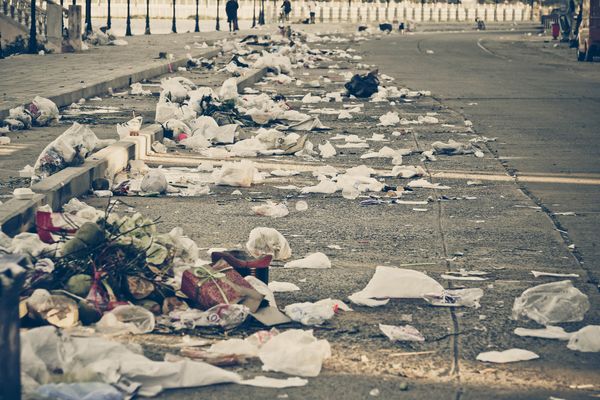4.3.4
Metals: Social Issues
Working Conditions & Human Rights
Working Conditions & Human Rights
Poor working conditions and human rights concerns are some of the key social issues associated with the use of metals.


Labour rights and working conditions
Labour rights and working conditions
- Metal extraction and production involve intensive labour.
- For example, mining operations and manufacturing processes.
- Workers face hazardous working conditions, low wages, long hours, and limited access to basic labour rights.


Child labour and exploitation
Child labour and exploitation
- In some regions, the mining and production of metals have been linked to child labour and exploitative practices.
- Children may be involved in dangerous mining activities.
- This deprives children of education.
- This subjects children to physical harm.
- This subjects children to mental harm.


Conflict minerals
Conflict minerals
- Certain metals are associated with conflicts.
- For example, tin, tantalum, tungsten, and gold are associated with conflicts in the Democratic Republic of Congo.
- Conflict minerals can be used to finance armed groups and perpetuate violence.


Indigenous rights and land displacement
Indigenous rights and land displacement
- Metal mining often takes place near lands that were inhabited by indigenous communities.
- The extraction of metals can infringe upon the rights of indigenous peoples.
- The extraction of metal can lead to:
- Land displacement
- Environmental degradation
- Loss of cultural heritage
Environmental Impact & Mining Practices
Environmental Impact & Mining Practices
The use of metals can give rise to several social issues, depending on factors such as mining practices and environmental impact.


Environmental Impact
Environmental Impact
- The extraction of metals can have severe environmental consequences.
- Mining operations can cause deforestation, habitat destruction, soil erosion, and water pollution.
- This leads to ecological imbalances.
- This harms local communities.


Health and safety risks
Health and safety risks
- Metal mining can expose workers and nearby communities to health hazards.
- Exposure to toxic substances like lead and mercury can have long-term health effects.
- For example, respiratory problems, neurological disorders, and developmental issues.


Waste management
Waste management
- The production of metals generates significant amounts of waste.
- For example, hazardous byproducts.
- The improper management of metal waste can result in pollution of water bodies, soil, and air.
- This poses risks to human health and ecosystems.


Supply chain transparency
Supply chain transparency
- The complex global supply chains for metals often lack transparency.
- This makes it difficult to trace the origin and conditions under which metals are produced.
- This makes it difficult to address social and environmental issues.
1Core Technical Principles
1.1New & Emerging Technologies
1.2Energy Generation & Storage
1.3Developments in New Materials
1.4Systems Approach to Designing
1.5Mechanical Devices
1.6Materials Categories
2Paper & Board: Specialist Technical Principles
2.1Selection of Materials
2.2Paper & Board: Forces & Stresses
2.3Paper & Board: Ecological & Social Footprint
2.4Paper & Board: Sources & Origins
2.5Paper & Board: Using Materials
2.6Paper & Board: Stock Forms, Types & Sizes
2.7Paper & Board: Scales of Production
2.8Paper & Board: Specialist Techniques & Processes
2.9Paper & Board: Surface Treatments & Finishes
3Timber: Specialist Technical Principles
3.1Timber: Selection of Materials
3.2Timber: Forces & Stresses
3.3Timber: Ecological & Social Footprint
3.4Timber: Sources & Origins
3.5Timber: Using Materials
3.6Timber: Stock Forms, Types & Sizes
3.7Timber: Scales of Production
3.8Timber: Specialist Techniques & Processes
3.9Timber: Surface Treatments & Finishes
4Metal: Specialist Technical Principles
4.1Metals: Selection of Materials
4.2Metals: Forces & Stresses
4.3Metals: Ecological & Social Footprint
4.4Metals: Sources & Origins
4.5Metals: Alloy-Based Materials
4.6Metals: Using Materials
4.7Metals: Scales of Production
4.8Metals: Specialist Techniques & Processes
4.9Metals: Quality Control
4.10Metals: Surface Treatments & Finishes
5Polymers: Specialist Technical Principles
5.1Polymers
5.2Polymer Categories
5.3Polymer Forms
5.4Polymer Production, Techniques & Quality Control
6Textiles: Specialist Technical Principles
6.1Textile Materials
6.2Selection of Materials
6.3Forces & Stresses
7Designing & Making Principles
7.1Investigation & Data
7.2Environmental, Social & Economic Challenges
7.3The Work of Others
7.4Design Strategies
7.5Communication of Design Ideas
7.6Prototype Development
7.7Selection of Materials
7.8Tolerances
7.9Material Management
7.10Specialist Equipment
7.11Specialist Techniques & Processes
Jump to other topics
1Core Technical Principles
1.1New & Emerging Technologies
1.2Energy Generation & Storage
1.3Developments in New Materials
1.4Systems Approach to Designing
1.5Mechanical Devices
1.6Materials Categories
2Paper & Board: Specialist Technical Principles
2.1Selection of Materials
2.2Paper & Board: Forces & Stresses
2.3Paper & Board: Ecological & Social Footprint
2.4Paper & Board: Sources & Origins
2.5Paper & Board: Using Materials
2.6Paper & Board: Stock Forms, Types & Sizes
2.7Paper & Board: Scales of Production
2.8Paper & Board: Specialist Techniques & Processes
2.9Paper & Board: Surface Treatments & Finishes
3Timber: Specialist Technical Principles
3.1Timber: Selection of Materials
3.2Timber: Forces & Stresses
3.3Timber: Ecological & Social Footprint
3.4Timber: Sources & Origins
3.5Timber: Using Materials
3.6Timber: Stock Forms, Types & Sizes
3.7Timber: Scales of Production
3.8Timber: Specialist Techniques & Processes
3.9Timber: Surface Treatments & Finishes
4Metal: Specialist Technical Principles
4.1Metals: Selection of Materials
4.2Metals: Forces & Stresses
4.3Metals: Ecological & Social Footprint
4.4Metals: Sources & Origins
4.5Metals: Alloy-Based Materials
4.6Metals: Using Materials
4.7Metals: Scales of Production
4.8Metals: Specialist Techniques & Processes
4.9Metals: Quality Control
4.10Metals: Surface Treatments & Finishes
5Polymers: Specialist Technical Principles
5.1Polymers
5.2Polymer Categories
5.3Polymer Forms
5.4Polymer Production, Techniques & Quality Control
6Textiles: Specialist Technical Principles
6.1Textile Materials
6.2Selection of Materials
6.3Forces & Stresses
7Designing & Making Principles
7.1Investigation & Data
7.2Environmental, Social & Economic Challenges
7.3The Work of Others
7.4Design Strategies
7.5Communication of Design Ideas
7.6Prototype Development
7.7Selection of Materials
7.8Tolerances
7.9Material Management
7.10Specialist Equipment
7.11Specialist Techniques & Processes
Unlock your full potential with Seneca Premium
Unlimited access to 10,000+ open-ended exam questions
Mini-mock exams based on your study history
Unlock 800+ premium courses & e-books
